by Olivia Ladanyi, studio photos by Ryan Molnar // Aug. 29, 2023
This article is part of our collaboration with Berlin Art Week.
Climbing the stairs to Anan Fries’ Kreuzberg flat, which also houses their studio, I lament the fact that these visits always seem to coincide with the few unbearably hot days that this summer has offered. But, once inside, the space is cool and Fries hands me a glass of water. The apartment is open plan, bright and modern. There’s a sense of it not having been lived in long, which is confirmed when Fries tells me they moved in recently. A Togo sofa takes up most of the living room and the greenery filling the large windows is so luscious and imposing it seems as though it might break through the glass at any moment. The studio itself, which leads off the hall, is a relatively small space. Some craft supplies on the shelves are among the only markers suggesting that an artist works here. This is perhaps telling of the media Fries works with, which includes VR and performance, the latter often rehearsed outside of the studio. Two screens dominate the desk and a lit up computer case glows purple from underneath, peering out like a living thing.
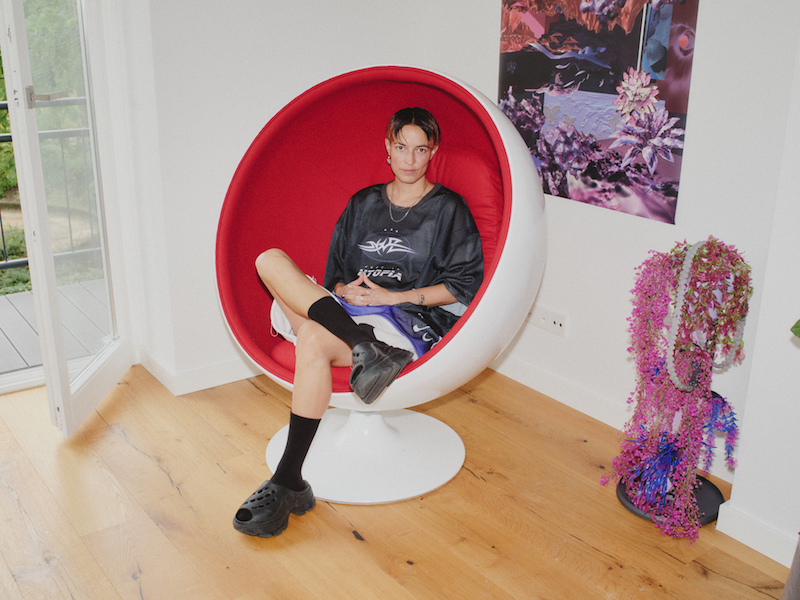
Fries builds speculative posthuman worlds where nonfemale bodies are “hacked” with pregnancy, species are brought back from extinction and babies are bred outside of human wombs. These are all soon-to-be-realities that fascinate Fries and inform their work, which lies at the intersection of nature and technology, transcending boundaries through speculation. By questioning the idea of what is natural, Fries points to the fact that nature and technology have been intertwined for millenia: “since we started using tools, we have influenced nature. I like to think that we cannot separate nature and technology and we are all part of this techno-nature sphere, as Rosi Braidotti calls it.” Combining VR with performance, Fries’ work also blends virtual and physical spaces, fusing digital and performing arts. “I’m interested in the Phygital, which I think is going to be our ultimate reality soon. Everything we are doing is going to be virtually augmented. In my work, I use it in the context of creating worlds that bring the digital space and the physical space together.” The performance element is, of course, absent in the studio today. Yet flowering magenta silicon umbilical-cord-like sculptures dotted around the room—prototypes Fries is developing for their upcoming performance during ‘Unleashed Utopias’—act as reminders that keep us tied to the physical realm.
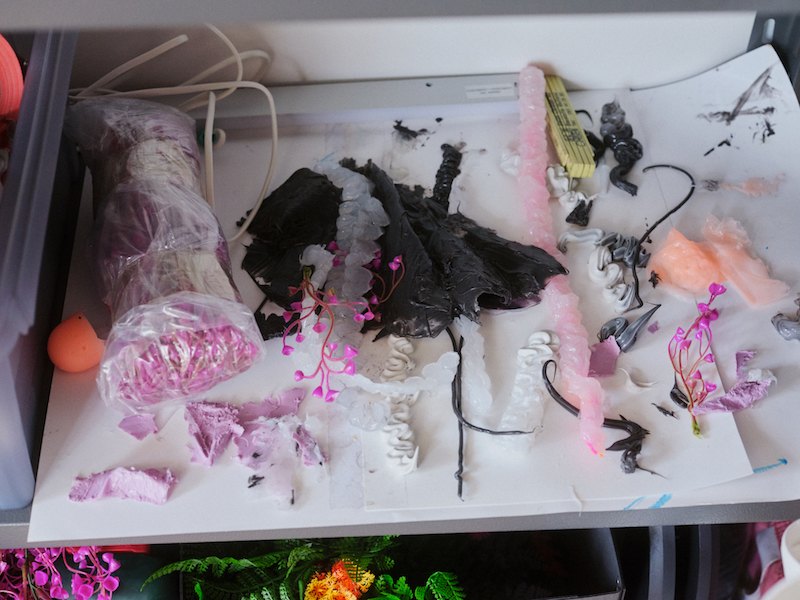
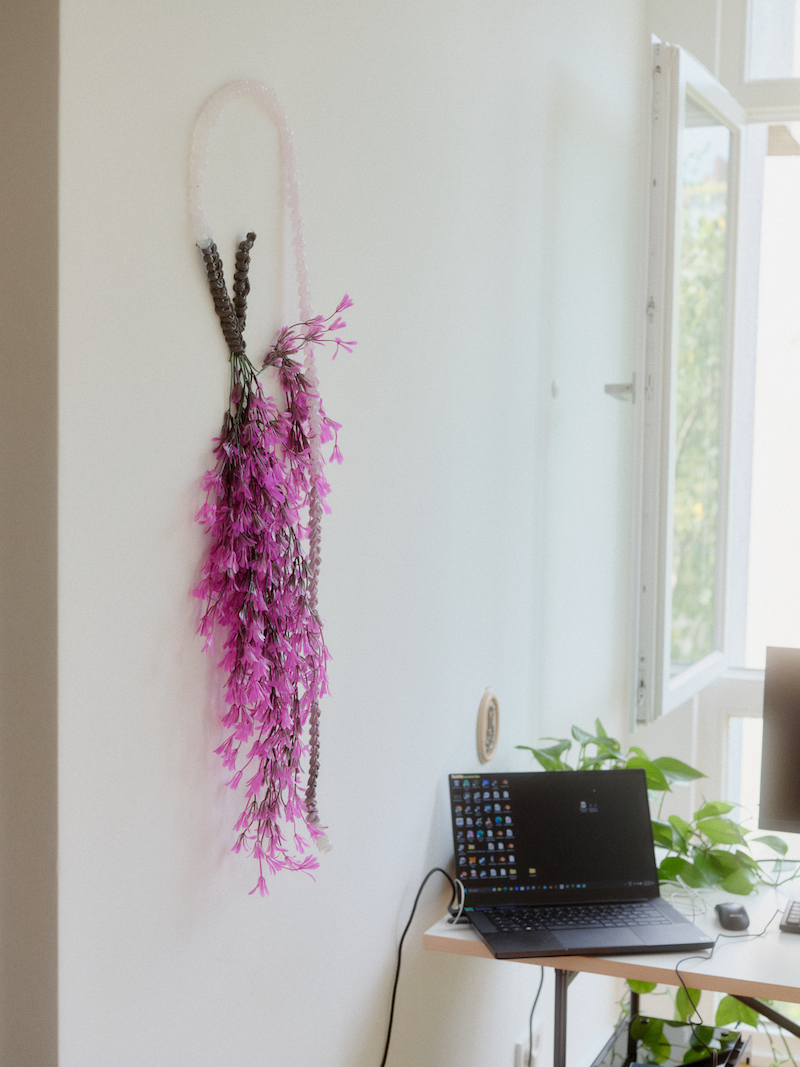
For Fries, umbilical cords—or connection cords—are “transmitters of data” that open up technological speculation about a future where different species can communicate and exchange information. In ‘Posthuman Wombs’, these cords connect different beings, like a sheep and a human, for example. The child of the hybrid performance ‘Virtual Wombs’, this 20-minute VR essay Fries created in collaboration with Malu Peeters, is populated with genderless pregnant posthumans, envisioning a world where all bodies can conceive and biological gender segregation doesn’t exist. To impregnate bodies that are not read as female is a way for Fries to speculate on a future where breeding is democratised and reproduction is no longer gendered, ultimately shifting existing power structures. “The work uses pregnancy as a portal to think about gender evolution,” they explain. Fries’ use of virtual wombs to deconstruct gender relates to their own experience of pregnancy as a non-binary person “and the discomfort that comes with that”, especially considering how unaccommodating the German medical system is for non-binary realities. Fries’ description of pregnancy as “an alienating experience where you really lose control over your body” explains why they liken it to being hacked. But really, this project is “about the posthuman perspective, and so it was important for me to interview pregnant people who are, in my eyes, posthuman.”
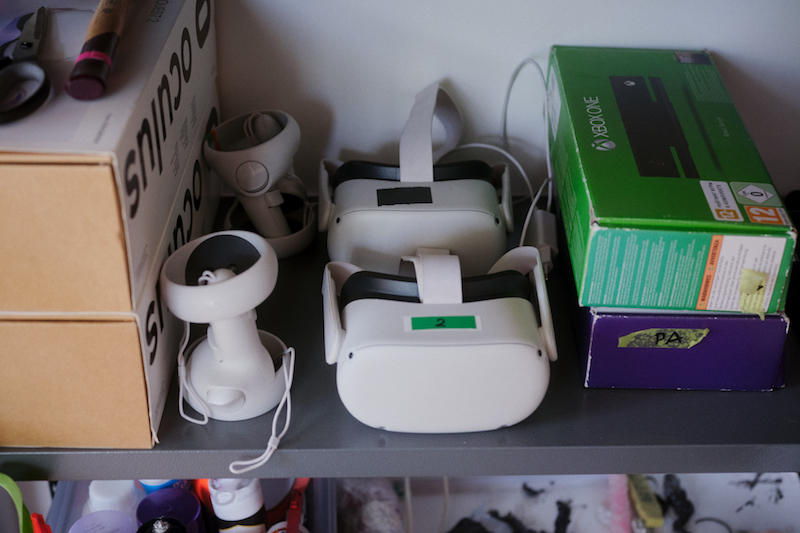
In close collaboration with the performers of ‘Virtual Wombs’, Fries studied the movements of avatars, bringing them back into the physical space with performers enacting the glitchy gestures of their digital counterparts. “We were interested in the friction of imperfection in digital movement and in how digital bodies mime physical movement. These movements, when they aren’t fluent yet and [they] glitch, were really interesting for us to use, because they are markers of this digital realm.” For Fries, glitching is a way to connect the physical and virtual realms, purposefully causing a friction between the two. They point out the connection to Legacy Russell’s ‘Glitch Feminism’, an important manifesto for Fries that explores the relationship between gender, technology and identity. The text guided Fries on how to think about virtual spaces and how to perform subverted identity within these spaces. With ‘Resurrect In Peace’—a phygital funeral for an extinct breed of pigeon — technology also inspired a lot of the movement research and performative elements. Working with Vive Trackers, which the performers held in their hands, depending on their movements, the trackers changed the digital environment projected onto the screen. “This ended up having a big influence on how the performers were moving in the space.” In this way, technology inspires the physical movement in Fries’ performances, influencing the choreography and almost becoming a choreographer itself.
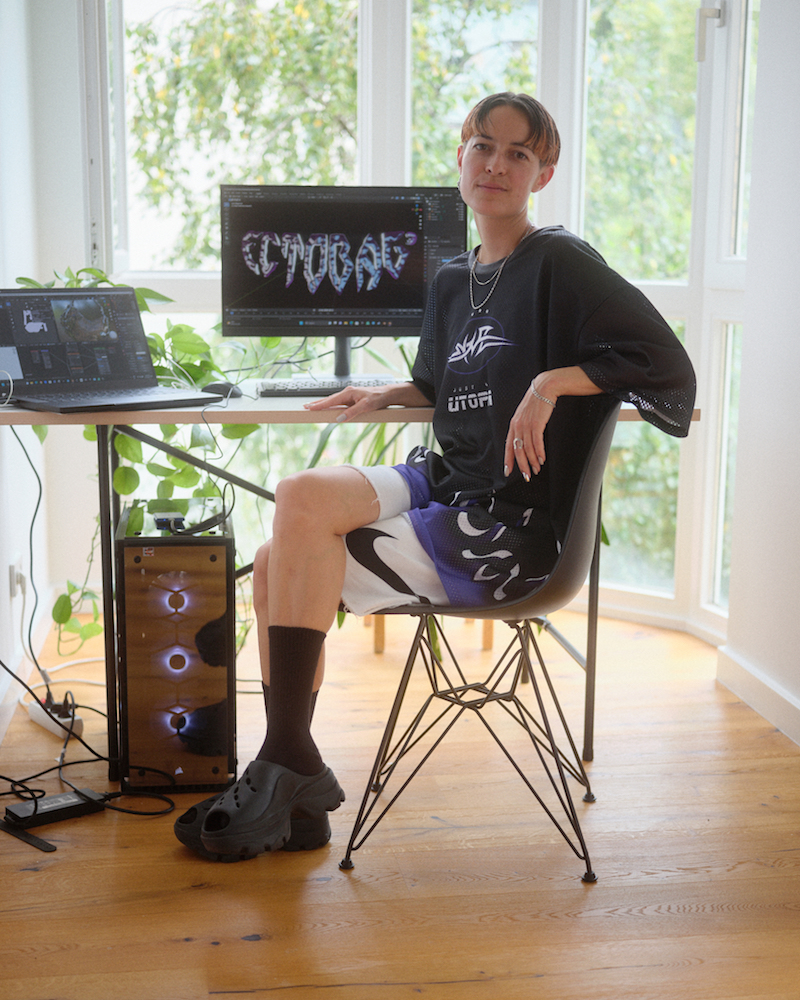
At ‘Unleashed Utopias’, Fries will also launch the Ectobag, an augmented reality product for breeding human babies in bags. This fiction, or speculation, destroys the “utopia” that they previously created in ‘Posthuman Wombs,’ where anybody can be pregnant, by proposing: “wouldn’t it actually be better if we didn’t have to be physically pregnant and we could breed our babies in bags, in fancy beautiful bags?” Fries tells me about the probability of this actually becoming a reality and the extensive research that’s currently being done on ectogenesis—the development of an embryo in an artificial environment outside of the human body. “It will be technically possible quite soon to breed babies in different ways, which I find fascinating because it’s one of the many developments where technology can give us so many options.” In the context of their work, Fries is both conscious of and fascinated by the danger that these technological advancements present. “I’ve opened this utopia that I’ve made look all pink and beautiful and tender, but of course there’s also this glooming knowledge that whatever technology we get in our hands, we can also use to destroy or to engineer horrible things.” We agree that it’s difficult to predict the real outcome of where these technological advancements will end up. Perhaps it’s for this reason that Fries doesn’t like using the word utopia for their work: “I would rather say it’s a speculation”. They believe there is a creative space within the virtual that can be used to speculate about posthuman possibilities.
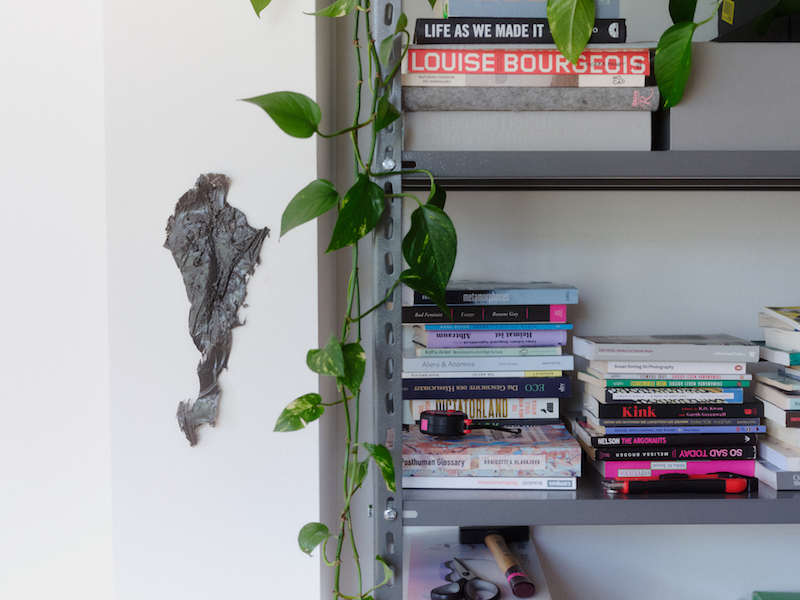
On the days that Fries isn’t here in their studio, they’re often rehearsing a performance in a space they’ve rented or are doing a residency at, such as Soft Power or their long-term collaborator, HAU Hebbel am Ufer. On the days they are here, they’re in pre- or post-production, figuring out what to do next, writing scripts and funding applications or creating moodboards and sketches. Or they might be conducting research based on the philosophical ideas of Rosi Braidotti, Donna Haraway or Legacy Russell. Everything always begins with extensive research, they tell me. Because their artistic practice is rooted in “understanding humans as posthumans,” posthuman theory always informs Fries’ speculations. Alongside VR headsets, books stacked on the shelf include ‘Posthuman Glossary’ and ‘Posthumanismus’ by Braidotti and ‘Staying with the Trouble’ by Haraway, both of which Fries cites as important influences. Although everything they do is deeply collaborative and they regularly work with Ambrus Ivanyos, a programmer who codes the VR, Fries does all of the meta-research: “I always try to learn the basics and have some understanding of how the game engines work, which is really important.” They plan to turn their latest work ‘Resurrect In Peace’ into a VR standalone experience, as they did with ‘Virtual Wombs’, and are conducting “emotional research” into interspecies grief. At the moment, they’re making sculptures for the first time, experimenting with silicon and playing around with plants: “a fun and humbling process”.
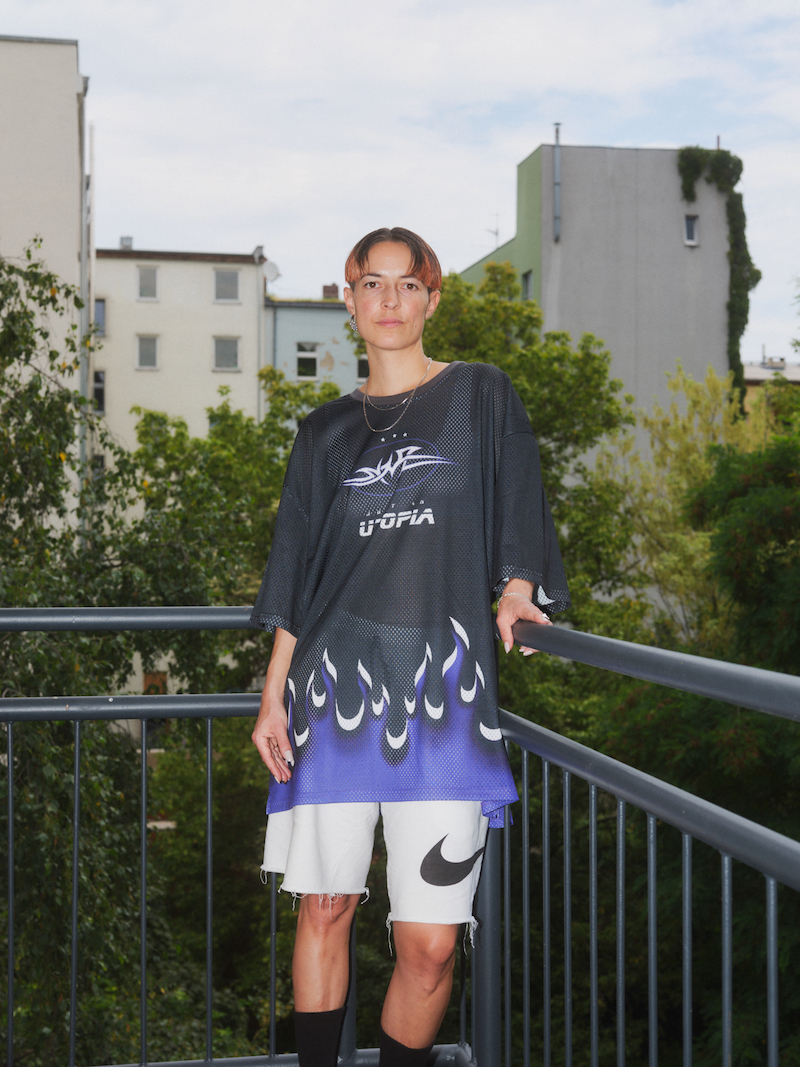
‘Unleashed Utopias’ is taking place at Haus am Lützowplatz (HaL) and will show the work of the five nominees of this year’s VR Art Prize. Accompanying the exhibition, the Digital Art Lab will be a meeting place for digital art during Berlin Art Week, running a five-day programme of talks, panels, workshops and performances. Fries’ performance will take place on September 13th, coinciding with the Digital Art Lab opening.
Artist Info
Exhibition Info
Haus am Lützowplatz
Group Show: ‘Unleashed Utopias. Artistic Speculations about Today and Tomorrow in the Metaverse’
Opening Reception: Friday, Sept. 8; 6pm
Performance by Anan Fries: Wednesday, Sept. 13; 8pm
Exhibition: Sept. 9–Nov. 5, 2023
hal-berlin.de
Lützowplatz 9, 10785 Berlin, click here for map






















